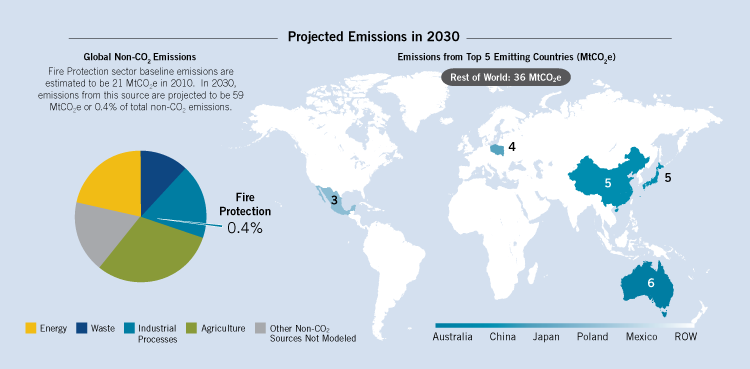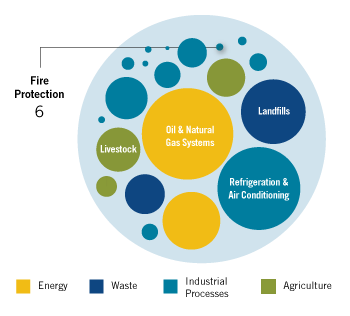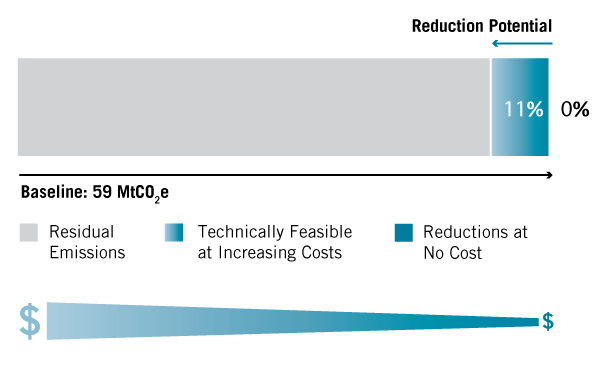Global Mitigation of Non-CO2 Greenhouse Gases: Fire Protection
Key Points
- Greenhouse gas emissions from fire protection equipment are projected to nearly triple between 2010 and 2030.
- Total flooding fire suppression abatement options involve replacing hydrofluorocarbons (HFCs) and perfluorocarbons (PFCs) with lower-GWP alternatives, including both in-kind and not-in-kind measures.
- Any abatement potential in the fire protection equipment sector in 2030 is projected to cost $39 per ton carbon dioxide equivalent (tCO2e) or more. To reduce emissions by 4.6 million metric tons of carbon dioxide equivalent (MtCO2e) or more, costs of $50 per tCO2e or more are projected.
Sector Description
The fire protection sector emits HFCs and PFCs when total flooding fire suppression systems and portable fire extinguishers are used. Greenhouse gas emissions from this sector were estimated at 21 MtCO2e in 2010. Under the baseline scenario, emissions are projected to increase significantly to 59 MtCO2e in 2030.
 View or download the full-size image here.(115 K, PNG)
View or download the full-size image here.(115 K, PNG)
Emissions Reduction Potential
Assuming full implementation of current technology, emissions in the fire protection sector could be reduced by up to 6 MtCO2e in 2030. This accounts for 0.14% of the 4,615 MtCO2e in global reduction potential in 2030.
 View or download the full-size image here.(95 K, PNG)
View or download the full-size image here.(95 K, PNG)
Abatement Potential
From the options quantified, global abatement potential of emissions from total flooding fire suppression applications is projected to be 6.4 MtCO2e, or nearly 11% of baseline emissions, in 2030. There is little abatement potential at break-even prices below $50 per tCO2e in 2030, which is projected to have the potential to abate 4.6 MtCO2e from the fire protection sector, or 8% of baseline emissions.
 It would be cost-effective to reduce emissions by 0%, compared to the baseline, in 2030. An additional 11% reduction is available using technologies with increasingly higher costs.
It would be cost-effective to reduce emissions by 0%, compared to the baseline, in 2030. An additional 11% reduction is available using technologies with increasingly higher costs.
View or download the full-size image here.(35 K, PNG)
Abatement Measures
The abatement options explored replace HFCs and PFCs with zero or low-GWP extinguishing agents to reduce CO2e emissions from the fire protection sector’s total flooding equipment. The alternatives to HFCs and PFCs in total flooding equipment are both in-kind gaseous agents and not-in-kind options. The in-kind gaseous alternatives include CO2, inert gases, and fluorinated ketones, and the not-in-kind alternatives include varying materials and systems such as dispersed and condensed aerosol extinguishing systems, water sprinklers, water mist, foam, and inert gas generators.
 Emissions reductions by technology in 2030 at $0/tCO2e and at higher prices.
Emissions reductions by technology in 2030 at $0/tCO2e and at higher prices.
View or download the full-size image here.(35 K, PNG)
